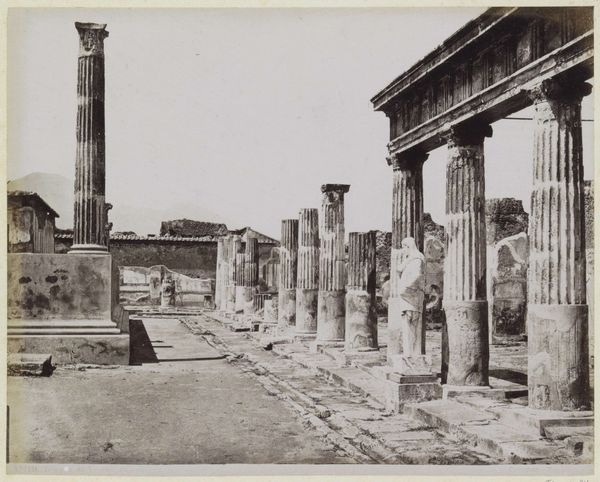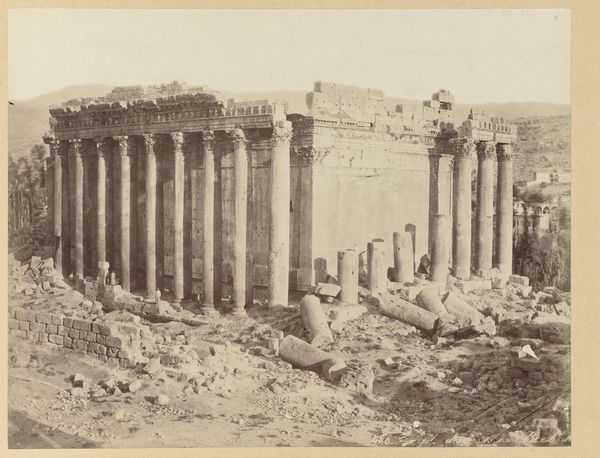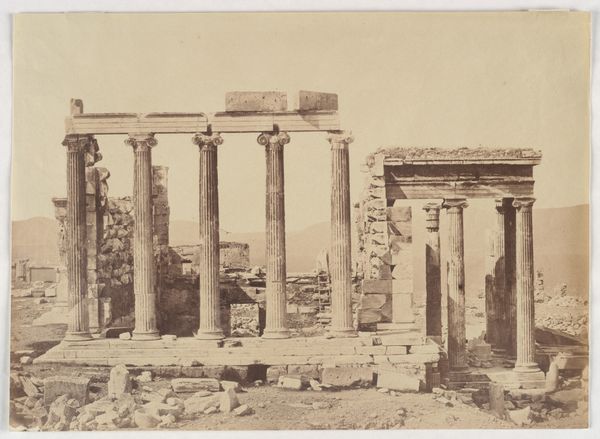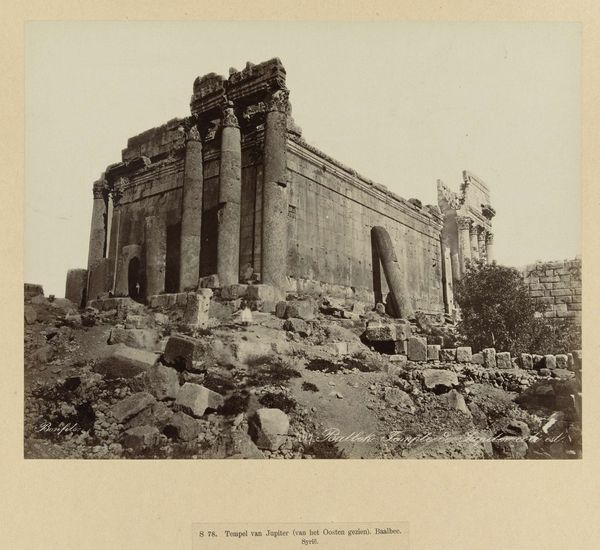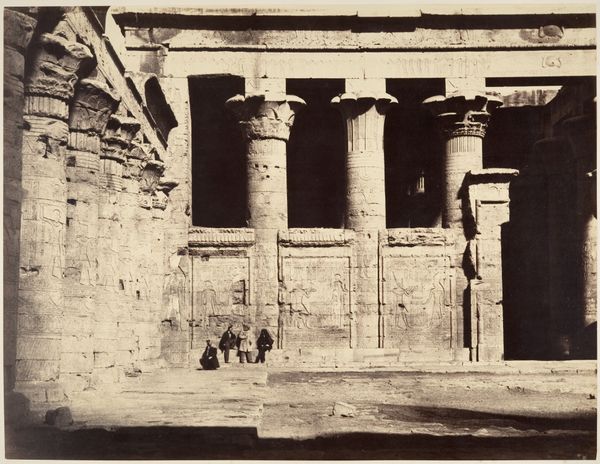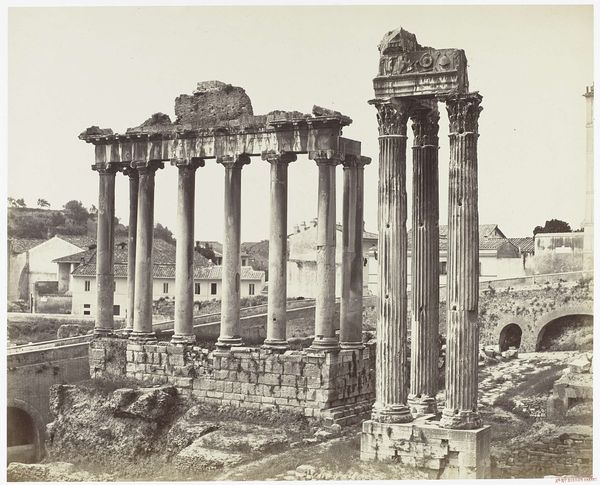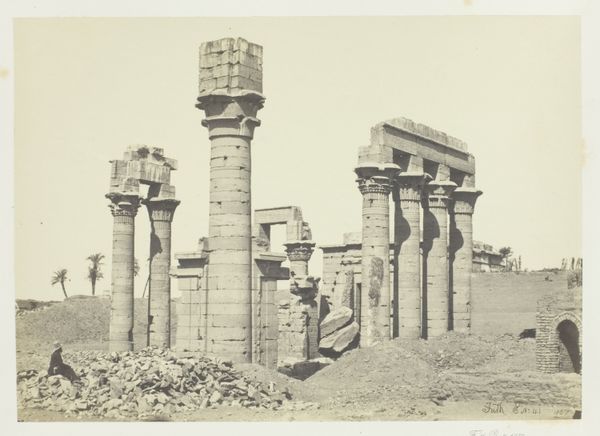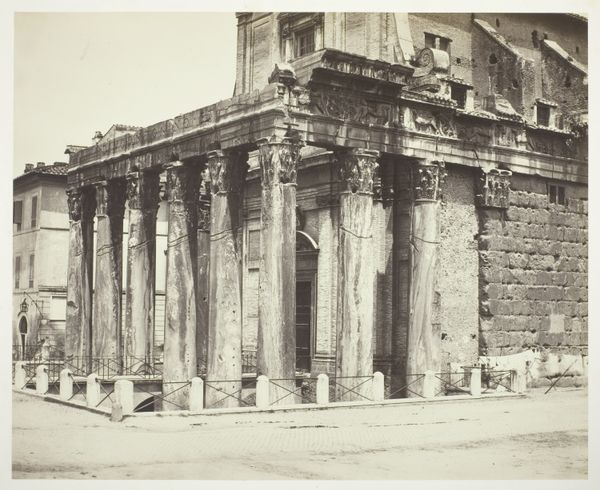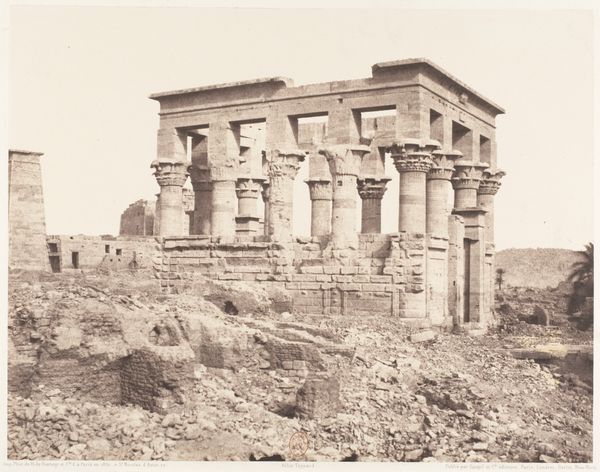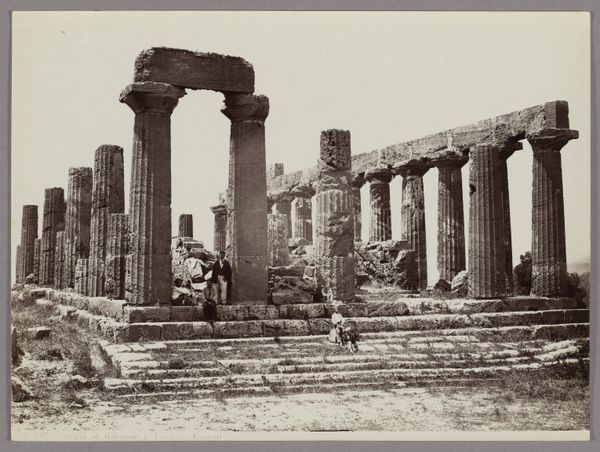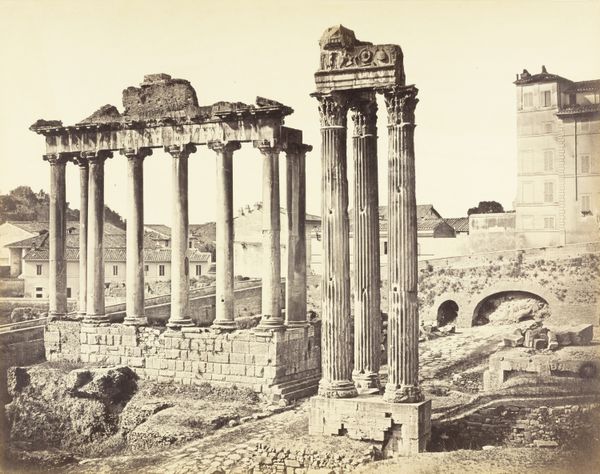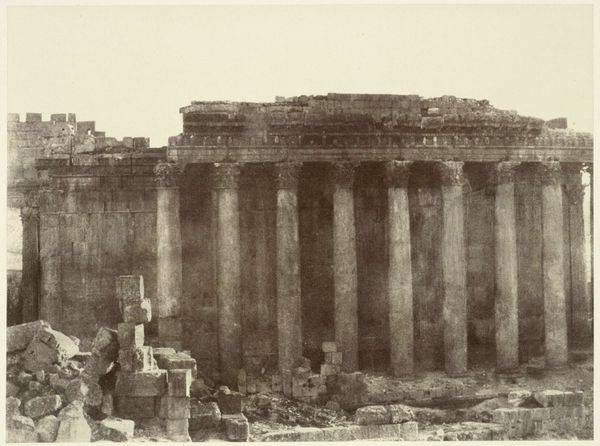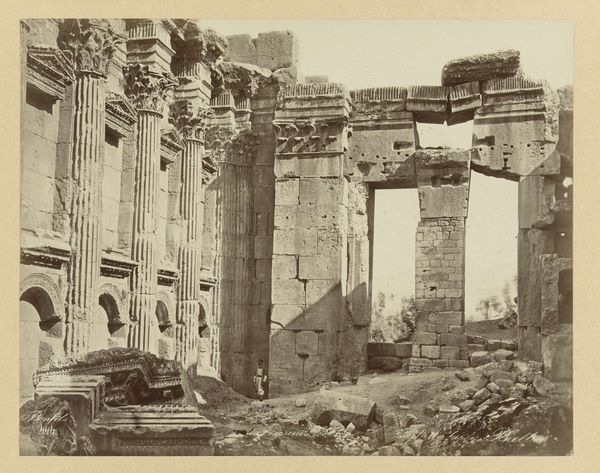
photography, architecture
#
landscape
#
outdoor photograph
#
photography
#
historical photography
#
ancient-mediterranean
#
academic-art
#
architecture
Dimensions: Image: 8 11/16 × 11 5/16 in. (22 × 28.7 cm) Sheet: 12 1/8 × 18 1/2 in. (30.8 × 47 cm)
Copyright: Public Domain
Eugène Constant captured this view of the Temple of Portunus in Rome using a photographic process that was then still relatively new. The sepia tones come from the developing process that was common for photographs at that time. Photography, even in its earliest days, was never really about pure documentation. Just as painting requires a skilled hand, so too did early photography require mastery of optics, chemistry, and composition. The choice of perspective, the control of light and shadow, and the careful development of the print – all of these contribute to the image's overall impact. Notice how Constant positioned his camera to emphasize the temple's imposing facade, lending it a sense of grandeur and permanence. The tones and textures imbue a feeling of timelessness that speaks to Rome's long and complicated history. Considering the material qualities of photography and understanding its social and historical context allows us to appreciate the artistry of early photographers like Constant. They were not just capturing reality, but actively shaping it.
Comments
No comments
Be the first to comment and join the conversation on the ultimate creative platform.
